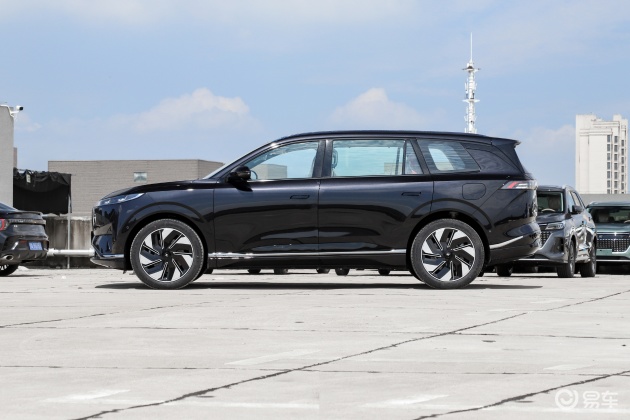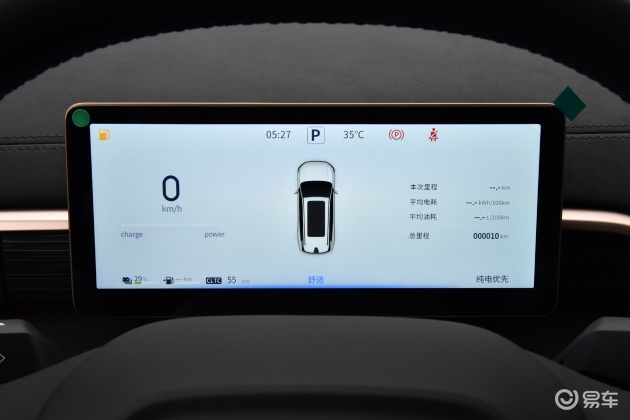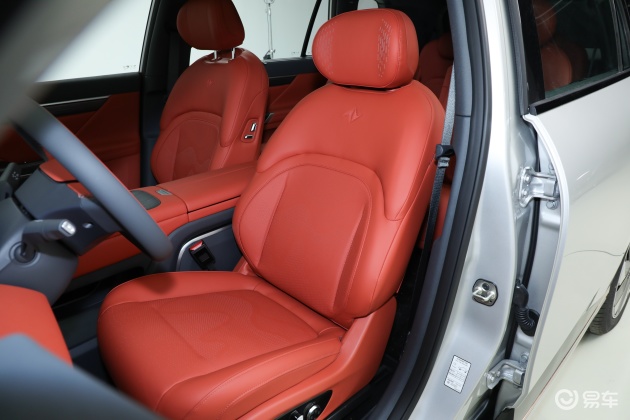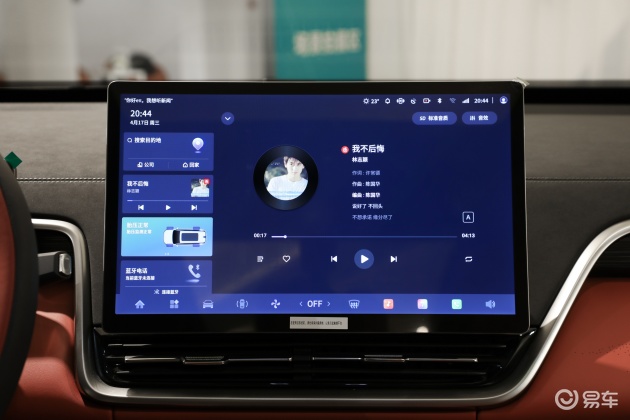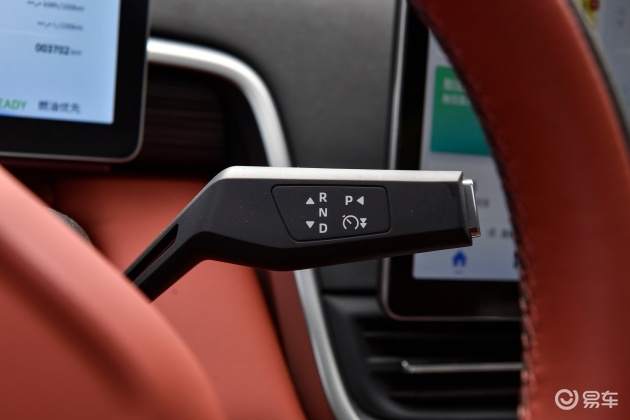Press conference video
At 15:30 on March 23rd, 2020, the Information Office of the People’s Government of Henan Province held the 39th press conference on the topic of epidemic prevention and control in COVID-19, Henan Province.
Publish content: Inform the latest progress of epidemic prevention and control in our province, focus on the situation that our province actively responds to the impact of the epidemic and promotes consumption, and answer questions from reporters.
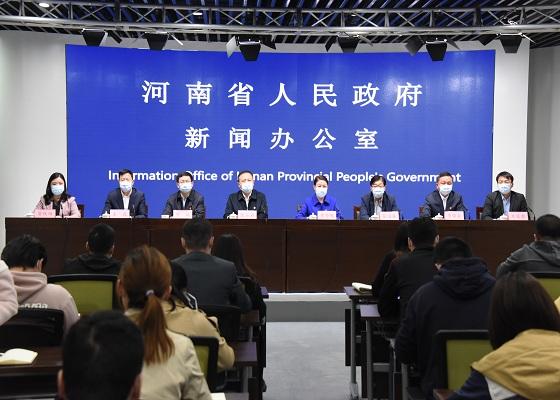
Publisher:
Zhang Ruoshi, Deputy Head of the Comprehensive Group of the Office of Epidemic Prevention and Control Headquarters, Member of the Party Group and Deputy Director of the Provincial Health and Wellness Committee
Member and Deputy Director of the Party Group of Li Ruopeng Provincial Department of Commerce
Li Bing, Deputy Secretary General of Zhengzhou Municipal People’s Government
President of Zhang Hailin Catering and Hotel Industry Association
Wang Lei, General Manager of Dennis Group
Li Baoquan, President of Henan Wanbang International Agricultural Products Logistics Co., Ltd.
Wang Yanzhe, Director of Strategic Development Department of Alibaba Group
Moderator:
Chang Yiyuan, Director of Press Release Office of Propaganda Department of Provincial Party Committee
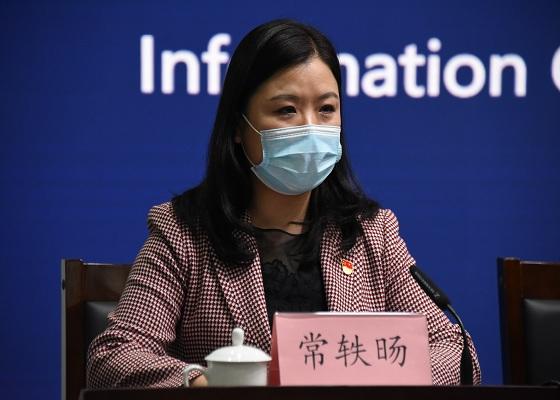
Moderator Chang Yiyuan
Ladies and gentlemen, friends from the media!
Good afternoon everyone!
The General Secretary of the Supreme Leader pointed out that it is necessary to combine the resumption of work and production with the expansion of domestic demand, release the restrained and frozen consumption, and cultivate and grow the new consumption and upgraded consumption that were spawned in the prevention and control of the epidemic, so that the physical consumption and service consumption can be replenished.
Secretary Wang Guosheng stressed that it is necessary to expand domestic demand, stabilize household consumption, accelerate the release of emerging consumption potential, and focus on promoting major projects and infrastructure construction.
In order to further promote consumption, according to the arrangement of the Office of the Provincial Epidemic Prevention and Control Headquarters, we held the 39th press conference on the topic of epidemic prevention and control in COVID-19, Henan Province, which was organized by the provincial government information office, to inform the latest progress of epidemic prevention and control in our province, focusing on the work of actively responding to the impact of the epidemic and promoting consumption in our province, and answering questions from reporters.
First of all, let me introduce the publisher who attended today’s conference:
Mr. Zhang Ruoshi, Deputy Head of Comprehensive Group of Provincial Epidemic Prevention and Control Headquarters Office, Member of Party Group and Deputy Director of Provincial Health and Health Commission
Ms. Li Ruopeng, Party Member and Deputy Director of Provincial Department of Commerce
Mr. libing, Deputy Secretary General of Zhengzhou Municipal People’s Government
Mr. Zhang Hailin, President of Provincial Catering and Hotel Industry Association
Mr. Chloe Wang, General Manager of Dennis Group
Mr. Li Baoquan, President of Henan Wanbang International Agricultural Products Logistics Co., Ltd.
Mr. Wang Yanzhe, Director of Strategic Development Department of Alibaba Group
First of all, please ask Mr. Zhang Ruoshi to report the progress of epidemic prevention and control in our province.
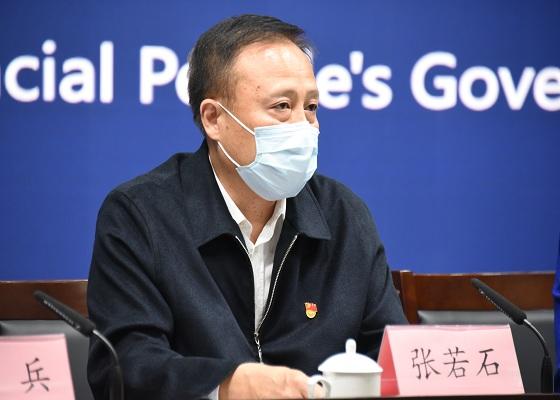
Zhang ruoshi
Dear media friends:
Hello everyone!
On March 18th, the Standing Committee of the Political Bureau of the Communist Party of China Central Committee meeting of the Communist Party of China pointed out that party committees and governments at all levels should enhance their sense of urgency, speed up the establishment of an economic and social operation order compatible with the epidemic prevention and control, actively and orderly promote the resumption of work and production of enterprises and institutions, and strive to minimize the losses caused by the epidemic. The counties and districts under its jurisdiction are all low-risk provinces, and normal production and living order should be fully restored.
Recently, Wang Guosheng, secretary of the provincial party committee, pointed out during the investigation and discussion of the Foreign Affairs Office of the provincial party committee that it is necessary to profoundly understand the spirit of the important speech of the Supreme Leader General Secretary on epidemic prevention and control, accurately grasp the staged changes in the epidemic prevention and control situation, recognize the complexity and seriousness of the epidemic situation at home and abroad, recognize the imported risks brought about by the rapid spread of international epidemics, and earnestly enhance the sense of responsibility and mission to prevent foreign imports and continue to fight the epidemic prevention and control.
According to the arrangement of the provincial epidemic prevention and control headquarters office, inform the latest progress of epidemic prevention and control in the province:
From 00: 00 to 24: 00 on March 22nd, there were no new confirmed cases, suspected cases and deaths in COVID-19. A newly reported confirmed case was imported from overseas.
Newly confirmed cases imported from abroad, Liu Moumou, male, 63 years old, visited relatives in Luxembourg. He left Paris, France on March 18th and arrived at Zhengzhou Xinzheng International Airport on March 19th. The patient reported his trip to his community before returning home, and was transferred to a centralized isolation point after arriving at the airport. Symptoms appeared during the quarantine period. Based on the comprehensive epidemiological history, clinical manifestations, laboratory tests and imaging results, it was diagnosed as a confirmed case (common type) imported from COVID-19 abroad at 23: 00 on March 22nd. At present, patients have been transferred to designated medical institutions for isolation treatment, and those who are in close contact with the flight from Beijing to Zhengzhou have all implemented centralized isolation observation.
According to the requirements of closed-loop management to prevent overseas input, the case reported its trip to the destination community before returning to China, and centralized isolation was carried out according to regulations. Relevant units conducted centralized and isolated medical observation on their close contacts with flights in a timely manner according to laws and regulations, thus avoiding the risk of social communication to the greatest extent.
By 24: 00 on March 22nd, the province had reported 1272 confirmed cases in COVID-19, and 1250 cases were discharged. A total of 2 confirmed cases imported from overseas were reported, all of which were treated in hospital. Since January 21st, the province has tracked 39,602 close contacts. On March 22, 27 people were released from observation, and 200 people are currently under medical observation.
At present, the import risk brought by the rapid spread of international epidemic has increased, and "external defense import" has become the top priority of epidemic prevention and control. Recently, the Supreme People’s Court, the Supreme People’s Procuratorate, the Ministry of Public Security, the Ministry of Justice and the General Administration of Customs jointly issued the Opinions on Further Strengthening Frontier Health and Quarantine Work and Punishing Crimes against Frontier Health and Quarantine according to Law, which clarified that six types of acts were convicted and sentenced for the crime of obstructing frontier health and quarantine, including: refusing to carry out epidemiological investigation, isolation, detention and other measures, failing to fill in health declaration cards truthfully, and refusing to accept health and quarantine by the person in charge of transportation. The positive situation of epidemic prevention and control today is hard-won! Relaxation and omission may lead to new great risks, which will consume huge manpower and material resources and even make the previous efforts fall short. We should attach great importance to the situation that a large number of close contacts of imported cases are isolated because of concealing the truth, strengthen the "hard constraint" of the law, resolutely put an end to the act of concealing entry, and take more decisive and strict measures to prevent the overseas import of the epidemic.
In order to meet the people’s medical needs, the Provincial Health and Wellness Committee requires all parts of the province to speed up the restoration of normal medical service order on the basis of scientific prevention and control. Pay attention to giving full play to the advantages of "Internet+medical care", strengthen online medical guidance, guide patients to make appointments, see doctors in different periods, and reduce the gathering of people. While doing a good job in epidemic prevention and control, we should carefully plan all kinds of health work and promote the high-quality development of health undertakings.
Only by doing the work more carefully and accurately will the effectiveness of preventing epidemic situation and promoting development be more remarkable and gratifying. We must unremittingly do a good job in epidemic prevention and control, promote the resumption of work and production in an accurate, orderly and solid manner, and resolutely implement various policy measures for epidemic prevention and control and resumption of work and production.
Moderator Chang Yiyuan
Thank you, Director Zhang. Next, please ask Deputy Director Li Ruopeng to introduce the work related to coping with the epidemic situation and promoting consumption in the business field of our province.
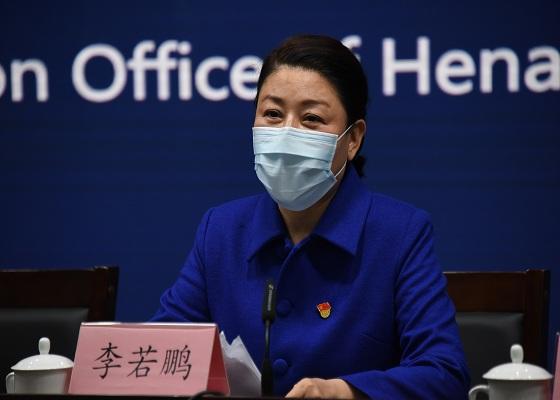
ruopeng lee
Dear journalists and friends,
Good afternoon everyone! Nice to meet you all. As we all know, consumption is one of the "Troika" that drives economic growth, and it is closely related to the lives of ordinary people. After the epidemic spread in COVID-19, the number of residents going out decreased, and the consumer market was greatly impacted. In January and February, the total retail sales of social consumer goods in our province, like other provinces, declined greatly, especially in catering, accommodation, department stores, entertainment and other industries. But these are temporary. In the long run, the trend of stable development and continuous upgrading of the consumer market will not change, and the basic role of consumption in stimulating economic development will be further enhanced. As a large consumer market with a population of 100 million, Henan has sufficient potential and strong resilience. The epidemic has a great impact on consumption in the short term, but it will gradually recover in the later period, especially with the gradual implementation of a series of national and local policies to promote consumption, the consumer demand suppressed and frozen by the epidemic will be gradually released, and even there will be recovery and compensatory growth. We are full of confidence in this. Below, I would like to briefly introduce to you some work that has been done, is being done and will be done in the business field of the whole province in coping with the impact of the epidemic and promoting consumption.
First, ensure supply, stabilize the market, and ensure the basic consumption of people’s livelihood. Food is the most important thing for the people, enriching the residents’ "food basket", tying up the "rice bag" and ensuring the continuous supply of people’s basic living materials. This is not only a concrete action to implement the spirit of the important instruction of the Supreme Leader General Secretary, but also the most important task of the commercial department in the early stage of the epidemic response. In order to ensure the basic consumption of people’s livelihood in a special period, we have further strengthened the overall coordination of the circulation and supply of daily necessities in the province. Twenty-eight backbone agricultural batch enterprises and 825 storage commodity delivery points have been identified, and the reserve delivery has been further strengthened. Since the Spring Festival, 1,851.1 tons of pork has been delivered, which has better played the role of "stabilizer" and "ballast stone" in the market. In conjunction with the public security and transportation departments, we will issue innovative passes for transportation vehicles for daily necessities and smooth the logistics and transportation channels. Guide all kinds of commercial enterprises to optimize the supply mode, such as guiding convenience stores to sink into the community, innovatively launching online ordering and offline delivery services such as "vegetable packages", "fruit packages" and "grain and oil packages", and guiding large-scale agricultural products wholesale enterprises to cooperate with the community to carry out community purchasing and realize contactless and convenient shopping. These measures not only met the needs of epidemic prevention and control at that time, but also ensured sufficient market supply and basically stable prices, and greatly guaranteed and facilitated the basic consumption of ordinary people.
Second, make practical moves, promote return to work, and consolidate and expand the consumption base. General Secretary of the Supreme Leader stressed that it is necessary to promote the prevention and control of epidemic situation and economic and social development in COVID-19 as a whole, and to combine the resumption of work and production with the expansion of domestic demand. Most of China’s consumption quotas are realized through commercial circulation. Without the comprehensive resumption of business operations of commercial circulation enterprises, it is impossible to expand consumption. To this end, we have focused on three aspects of work: first, we should focus on resuming business. Guide commercial and trade circulation enterprises to resume business in an orderly manner in accordance with the industry epidemic prevention guidelines; Establish a counterpart contact mechanism for the resumption of business in the agricultural batch farmer’s market; In the catering industry, we launched the "anti-epidemic and help to return to work" public welfare assistance activities; A total of 20 research groups led by department-level cadres went to various places for investigation and supervision in four batches to coordinate and solve the difficulties of enterprises’ resumption of business in time. Up to now, the resumption rate of supermarkets with an area of over 500 square meters in the province is 98.3%, the resumption rate of key agricultural markets is 79.9%, the resumption rate of logistics enterprises above designated size is 96.3%, and the resumption rate of e-commerce enterprises’ stores is 92%. Second, focus on policy promotion. In response to the impact of the epidemic, we have introduced 11 measures to promote consumption and promote the release of consumption potential around changing catering service methods, broadening e-commerce consumption channels and innovating consumption patterns. Nineteen key agricultural products supply chain enterprises were identified during the epidemic prevention and control period, and 25 million yuan of support funds were allocated, which further mobilized the enthusiasm of enterprises. The United Provincial Poverty Alleviation Office and other departments have introduced 10 measures to alleviate the unsalable agricultural products in poverty-stricken areas caused by the epidemic. Third, pay attention to benefiting enterprise services.In order to ensure the implementation and landing of various policies for helping enterprises issued by the central government and our province, we actively docked financial institutions and launched a series of financial products for catering enterprises, such as "starting loans, cloud tax loans, and returning to work e-loans", providing inclusive quality financial services; Docking backbone circulation enterprises, providing catering enterprises with cheap and high-quality grain, oil and vegetables. Carry out the training of anti-epidemic farmers and power suppliers, and drive local agricultural special products to become "online celebrity", go out of Henan and go to the whole country. Together with the Provincial Poverty Alleviation Office and other departments, the campaign "internet plus War Epidemic Promotes Sales to Help Poverty Alleviation" was launched. At present, the province has signed more than 60,000 online contracts, involving an amount of 135 million yuan.
Third, seize opportunities, live circulation, and stimulate residents’ consumption potential. Under the strong leadership of the CPC Central Committee, the State Council and the provincial party committee and government, the situation of epidemic prevention and control in our province, like the whole country, continues to improve, and since the emergency response was adjusted from Grade I to Grade II, the production and living order has been accelerated. This has created conditions and provided opportunities for cultivating and expanding new consumption and stimulating residents’ consumption potential. We will take this as an opportunity, take multiple measures at the same time, make more efforts, combine long and short, and play a combination boxing, and do everything possible to make consumption hot and the economy alive as soon as possible. In the near future, we will carry out the "Spring Full of the Central Plains" to promote consumption and benefit the people for a hundred days, and rekindle consumption enthusiasm. It is planned to use about 100 days to intensively launch 15 activities to benefit the people and the people at the provincial level, demonstrate and drive all localities to carry out consumption promotion work, link up and down, boost consumer confidence, activate market atmosphere and promote consumption compensation. In the medium and long term, we should improve policies and measures and establish a long-term mechanism to promote stable consumption growth. We studied and issued the Implementation Opinions on Accelerating the Development of Circulation and Promoting Commercial Consumption in our province, and put forward support measures with high gold content in many aspects, such as transforming and upgrading commercial pedestrian streets, encouraging export products to expand the domestic market, releasing the potential of automobile consumption, activating the consumption in the catering market, prospering the night economy, broadening the holiday consumption space, and building a brand commodity marketing platform, so as to further promote the upgrading of commercial consumption and better meet the consumption needs of the people.
The COVID-19 epidemic has hit all industries, especially in the field of consumption. Many industries such as catering, culture and entertainment once pressed the "pause button". At present, with the continuous improvement of the domestic epidemic prevention and control situation, the "restart button" and "fast forward button" have been pressed in the consumption field, and the "spring" of consumption has arrived.
Moderator Chang Yiyuan
Thank you, Director Li. Next, please ask reporters to ask questions about your concerns. Please inform your media organization before asking questions.
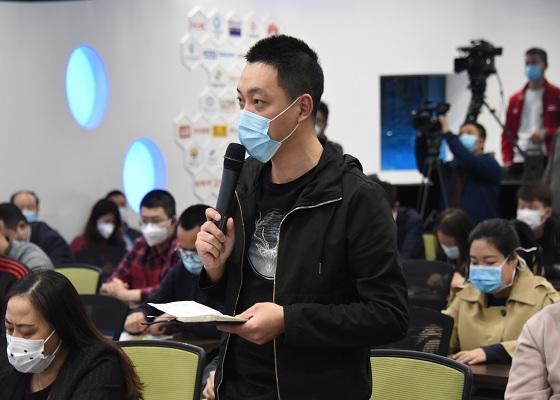
China news service reporter
As mentioned in the release just now, in order to do a good job in promoting consumption, the Provincial Department of Commerce will organize a hundred-day campaign to promote consumption and benefit the people in the whole province. Can you tell us about the specific situation?
ruopeng lee
The 100-day action of "Spring in the Central Plains" to promote consumption and benefit the people is a package of action plans to promote consumption, and it is also a concrete action to implement the spirit of the important instruction of the Supreme Leader General Secretary on "releasing the suppressed and frozen consumption". Its purpose is to gradually and continuously activate the consumer market and stabilize expectations by holding individual activities, thus further boosting consumer confidence and stimulating consumer enthusiasm.
In this 100-day campaign, we took "boosting consumption, helping entrepreneurs, and fighting the epidemic with E" as the theme, mainly focused on key areas such as "digital transformation, supermarket promotion, e-commerce drive, catering transformation, automobile consumption, and agricultural products going up", and insisted on taking activities as the main line, and through "the government set up a stage and enterprises sang operas", we ensured that there were activities every week, bright spots appeared every month, and achieved results every hundred days.
Our activity is divided into three stages: in March, online promotion was the main activity, and six activities were arranged. In the early stage, we have successfully held a number of activities, such as the commonweal class of rural e-commerce training to help farmers fight the epidemic in Henan Province, the online signing of "internet plus War Epidemic, Promoting Sales and Helping Poverty Alleviation", and achieved good results. Tomorrow, we will join hands with well-known e-commerce platforms and key retail enterprises in the province to hold the launching ceremony of the "See You One Yuan Carnival Shopping Festival every week", which lasts for one month. Everyone is welcome to participate actively. In April, the activities were mainly based on the combination of online and offline, and nine items were arranged, mainly including: the collective activities of thousands of backbone merchants in Henan Province to jointly discount and promote Huimin, the activities of 100 automobile sales stores to benefit Huimin online and offline, the collective oath action of prepaid card enterprises in cities and counties of Henan Province to "promote integrity and boost consumption", the launching ceremony of customized service of Henan online time-honored brand pavilion, and the sinking community of Henan logistics enterprises with "one kilometer unblocked and 100 meters connected", "agricultural special products" and the first May activities mainly focus on enriching offline content and creating new consumption scenes. Combined with the upcoming "China Brand Day", we launched the "Brand Consumption Month" activities with the theme of "Ingenuity and Wisdom, Brilliance of the Central Plains" and the content of "Craftsman Henan, Brand Story, Masterpiece’s Works, Highlighting Moment, Initial Heart of Creation".
In short, through the above series of activities, we strive to make our Central Plains market "alive" and our people’s consumption "on fire". Through these two "live and fire", we will force our consumption to upgrade and the digital transformation of traditional businesses, and realize the "win-win" of epidemic prevention and control and economic development.

Henan Daily reporter
Zhengzhou, as the capital city, is the weather vane leading the consumption of the whole province. Excuse me, after the adjustment of emergency response level, what measures will Zhengzhou take next to support commercial enterprises and promote the release of consumption potential of the whole society?
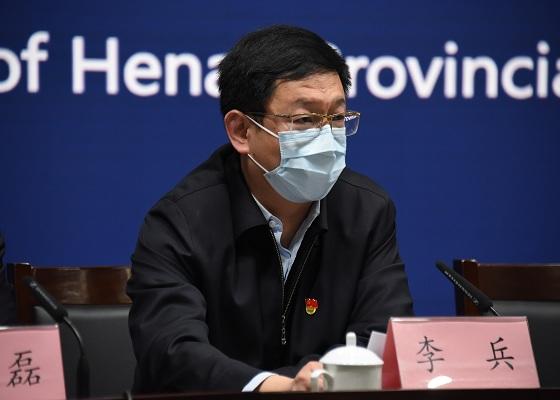
Bing Li
At present, the province’s emergency response level has been adjusted to Grade II, and Zhengzhou City has also shifted from comprehensive prevention and control to key precise prevention and control. All industries have resumed normal operations except the negative list. The rate of returning to work of large shopping malls and supermarket chains in the city has reached 100%, and catering services of catering enterprises have been opened in an orderly manner since March 19, and the production and living order has been accelerated.
In order to thoroughly implement the decision-making arrangements of the Supreme Leader General Secretary, the State Council of the CPC Central Committee and the provincial party committee and the provincial government on making overall plans for epidemic prevention and control and economic and social development, Zhengzhou City regards expanding consumption as an important focus of steady growth, and strives to continuously stimulate market vitality by implementing more active support policies, and promote timely replenishment of consumption and accelerated release of consumption potential.
Last week, we just held a week-long "Spring Warm Zhengzhou" online shopping festival to warm up the consumption recovery after the epidemic. Through the "internet plus N" model, nine online platforms, such as Hungry, JD.COM Arriving at Home and UU Running errands, will be brought together, and the key supermarkets, automobile 4S stores, brand catering enterprises, consumer goods manufacturing enterprises and specialty agricultural products enterprises in the city will be linked to open a new consumption model, so that citizens can stay at home and enjoy the new experience of "cloud" affordable shopping. The online shopping festival attracted more than 5,000 enterprises to participate, and launched more than 1,000 brands, nearly 100,000 kinds of daily necessities, 1.8 million kinds of books, 48 4S stores, more than 50 catering brands, and featured agricultural products covering more than 100 villages in the province. The nine major e-commerce platforms have launched a number of concessions such as subsidies and commission refunds. Major merchants have launched their own online platform concessions in a super-synchronous manner, and adopted promotional methods such as spike price, group purchase, coupon distribution and full and reduced delivery to benefit the people. Zhongdamen and Koala Haibao set up a "Zheng Xiang Hai Gou" section for the sea buyers to provide consumers with fine products from all over the world. The first secretaries in the village promoted Zhengzhou Yellow River Carp, Zhongmu Turtle Rice, Xinmi Double Low Rapeseed Oil, Dengfeng Mustard Silk, Xinzheng Xiaomi, Gongyi Honeysuckle Tea, etc. to go online one after another to help poverty alleviation. At present, the number of visits and transactions on various online platforms has increased rapidly, and citizens’ consumption has gradually picked up.
In the next step, our city will strengthen the investigation and judgment of epidemic situation, introduce new policies, create new scenes, link the resources of all parties in the field of trade and circulation, take "Fashion Greentown, Enjoy Zhengzhou" as the theme, carry out more accurate consumption promotion activities on the basis of epidemic prevention and control, enhance residents’ consumption enthusiasm, and strive to form a consumption boom.
First, study and formulate some measures to promote consumption growth in Zhengzhou’s business sector. Organize and plan a series of consumption promotion activities, increase support in supporting the development of leading enterprises, creating characteristic commercial blocks, building community convenience stores, developing new formats and introducing the first stores, so as to promote the upgrading and expansion of the city’s commercial circulation industry.
The second is to hold the "Zheng Hao Yu Jian" fun season purchase activity. Focus on daily necessities, home life, automobile consumption, special food, cultural tourism and other industries closely related to residents’ lives, give play to the role of characteristic commercial streets and business associations, and jointly plan and hold consumption promotion activities with prominent themes and distinctive features in accordance with the principle of "unified leadership of the city, specific responsibility of counties and districts, and joint efforts of various departments" to continuously stimulate consumption.
The third is to hold a series of activities of "Drunk Beauty and Night Zhengzhou". Focus on building the business districts of regional night consumption gathering areas such as Erqi Square, Millennium Square and Huayuan Road, and differentiate into a number of characteristic night consumption blocks such as Dehua Pedestrian Street, Nongke Road Bar Leisure Street and Haima Haihui Center, thus forming a "night Zhengzhou" consumption landmark. Cultivate a diversified night consumer market, gather famous snacks from all over the country, and attract consumers to experience the food culture of the Central Plains. Timely launch a number of night goods, night shopping, night appreciation and night tour projects, injecting new vitality into Zhengzhou’s economic growth and urban quality.
In addition, we will carry out the activities of "giving policies, services, factors and strengthening confidence" for enterprises, establish a working mechanism of normalization of contact visits, rapid problem solving and timely feedback, actively help enterprises coordinate and solve various problems, stabilize development expectations, enhance development confidence, and provide strong support for promoting consumption and expanding domestic demand.
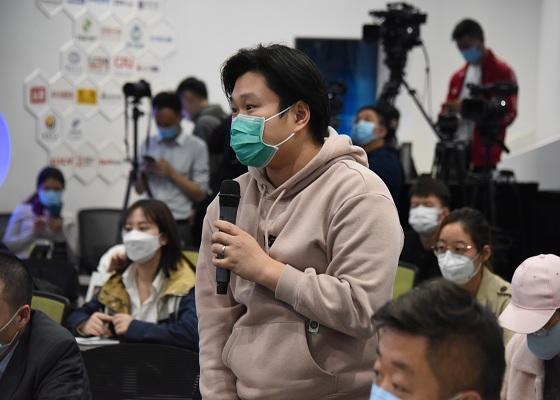
He ‘nan Radio and TV Station Elephant Journalist
We know that the epidemic has had a great impact on the catering industry. Excuse me, what is the current situation of the catering enterprises in our province? How can we protect the health and safety of consumers and employees when some places have allowed in-house meals? How to enliven the catering consumer market in the next step?
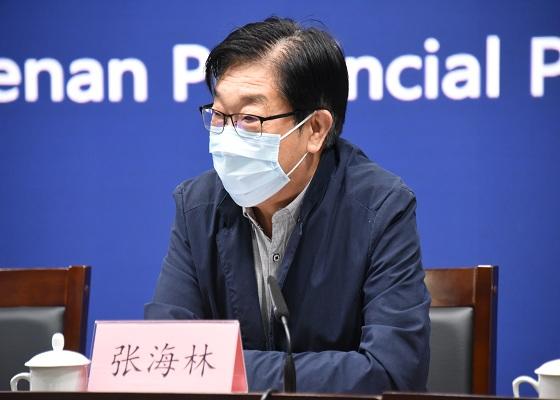
Zhang Hailin
The Spring Festival is the golden season of the catering industry. The sudden epidemic has a great impact on the catering industry, and catering enterprises in the province generally close their stores. However, in the face of the epidemic, many catering enterprises actively responded to the association’s initiative, took the initiative to unsubscribe from banquets, sold the stocked ingredients at low prices, and some gave them to the public for free. Catering enterprises also donated money and materials to deliver food free of charge to front-line people fighting the epidemic, which reflected the responsibility and responsibility of Henan catering people. For example, the Zhengzhou Food and Beverage Association selected six outstanding chefs, brought more than 300,000 yuan of ingredients, and rushed to Wuhan to help Henan to help Wuhan medical staff send their hometown flavor; Lubanzhang Catering provided 16,000 free lunches for the staff of epidemic prevention inspection points, worth more than 400,000 yuan; The staff of A-Wu Yellow River Carp delivered more than 200,000 yuan worth of caring food, such as braised Yellow River Carp, fresh fruit and homemade cakes, to medical staff, police and grass-roots office staff in Zhengzhou and Changyuan. There are also 6,700 free meals delivered by KFC for anti-epidemic medical staff, community personnel, police and bus drivers, and more than 8,000 free meals delivered by Dicos.
In order to help catering enterprises to resume business and provide convenient catering services for consumers, under the guidance of the Provincial Department of Commerce, the Provincial Catering Association and Zhengzhou Catering Association jointly published multi-issue catering take-out service information on their new media platform, involving 82 take-out catering enterprises, nearly 3,000 stores, 87 large group catering enterprises and nearly one million daily supply capacity. At present, more than 60% restaurants in the province have resumed business, and it is expected that the opening rate will increase rapidly.
At present, many cities in the province, such as Zhengzhou, Luoyang, Anyang, Xinxiang, Hebi, Puyang, Shangqiu, etc., have carried out restaurant food services in an orderly manner. A set of management norms that meet epidemic prevention requirements has been established for dining services in various places, which not only strictly measure temperature, register, disinfect and ventilate, but also sit across tables in the hall and dining tables, and share food with public chopsticks. Some restaurants strictly disinfect the dining chairs at the dining table before receiving the next one after one group of guests has left. The Provincial Catering Association has just signed a cooperation agreement with Henan Jicai E-commerce Company, Henan Wanbang and Dennis to carry out supply chain cooperation in the catering industry such as food procurement, warehousing and distribution to ensure the quality of food and reduce operating costs. At present, the vast number of catering enterprises that allow eating in the hall have made full preparations. Welcome to the store for consumption!
At present, the situation of epidemic prevention and control in the whole country and the whole province is getting better day by day. After the epidemic is over, the provincial catering association will actively carry out the activities of creating food blocks and night markets with special food culture, and organize a series of activities such as "releasing Henan cuisine to the world", "cooking competition" and "food carnival" to activate the catering market, provide high-quality, delicious and diversified catering varieties and services for the masses, and improve the visibility and influence of Henan catering.
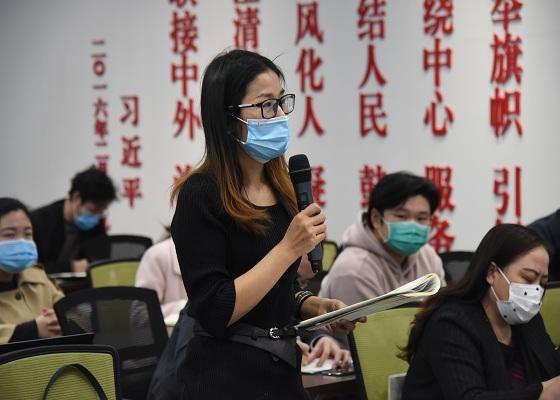
Henan Business Daily reporter
Since the outbreak of the epidemic, the supermarket industry in the whole province, represented by Dennis, has made positive contributions to ensuring supply and stabilizing prices. With the accelerated recovery of production and living order, what measures will Dennis Group take to meet the diversified and personalized consumption needs of the masses?
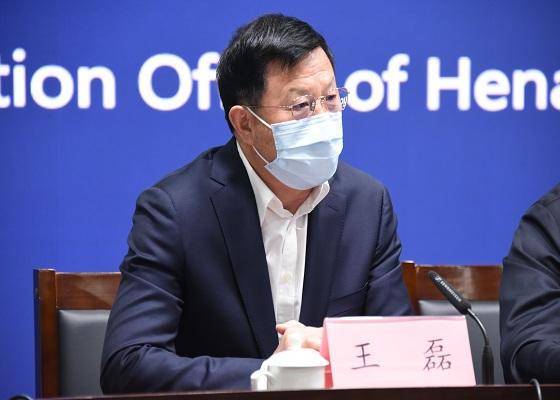
Lei Wang
Since the outbreak, the province’s commercial and trade circulation enterprises have actively responded to the call of the party and the government, earnestly fulfilled their social responsibilities, and ensured the market supply of people’s livelihood necessities. Dennis Group supported the government’s prevention and control work, donated 20 million yuan, and set up love relay stations in 16 cities in the province to provide free lunches, fruits and drinks to medical staff, traffic police, sanitation workers and couriers who stick to their posts, thus contributing to social send warm. Nearly 500 stores in the province are all operating normally, with more than 20,000 people on the job, distributing and selling more than 2,000 tons of daily necessities every day, and setting up special areas to put in government-reserved meat and cheap vegetables to better meet the daily needs of the people in the Central Plains.
Recently, as the epidemic prevention and control situation continues to improve, these consumer demands will be gradually released. To this end, Dennis has prepared a series of consumption promotion activities, and plans to invest 200 million yuan to promote sales from late March to May, so as to meet everyone’s personalized, diversified, experiential and scene-based consumption needs on the basis of strict epidemic prevention and control.
In terms of hypermarkets and convenience stores, we have formulated a 100-day promotion plan of "Warming the Spring and Fighting the Epidemic, Helping each other in the Same Boat, Expecting Happiness", and joined hands with banks to join hands with well-known brands. The province’s online and offline linkage, 2-3 times a week theme promotion activities, so as to benefit consumers and stimulate consumption growth.
In the format of department stores, we will fully mobilize all resources and intensify theme activities in stages, such as the theme of welcoming the Spring Festival, the theme of Thanksgiving to angels in white, the theme of spring cosmetics festival and the theme of outing season. After May, with Dragon Boat Festival, Mid-Year Celebration and Summer Shopping Festival as the theme, the promotion intensity and frequency will be increased.
In terms of cultural and entertainment formats, we will make good preparations for the resumption of business of entertainment venues under the Group according to the unified deployment of provincial and municipal prevention and control headquarters, and once the time is ripe and conditions permit, they will be opened in an orderly manner.
At the same time, we will always put the life safety and health of consumers in the first place, strictly control the entrance of supermarkets, strictly control the order of supermarkets, reasonably control the flow of people, strengthen environmental sanitation management, and do a good job in ventilation and disinfection to ensure the safety of consumers.
It’s time for shopping when spring blossoms. Sincerely welcome everyone to go out of the community, out of the house in an orderly manner, into the shopping mall with a good mood, shopping, leisure and consumption. We will wholeheartedly create a safe and secure consumption environment for everyone, so that you can come happily and return with satisfaction.
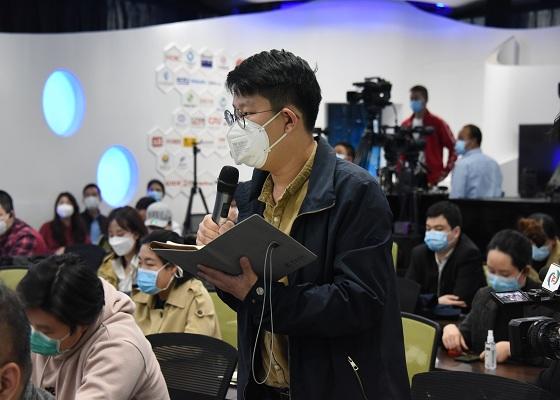
Zhengzhou People’s Broadcasting Station reporter
As an important agricultural product supply base in China, Wanbang Group plays an important role in protecting the "food basket" of ordinary people. Please tell us what measures Wanbang agricultural products wholesale market has taken to stabilize prices and ensure supply, and how will it play a better role in the next step?
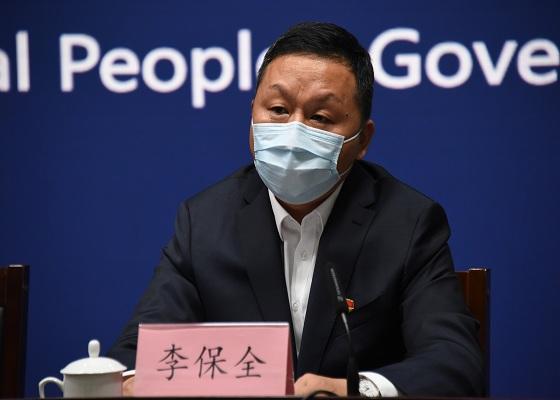
Li Baoquan
In the face of a sudden epidemic, Wanbang, as the main supplier of agricultural products in the Central Plains and surrounding provinces, responded quickly. On the third day of the New Year’s Eve, it immediately recalled all middle and high-level personnel, called on merchants to return to work in advance to ensure supply, and encouraged merchants to contact sources and reserve materials. In order to mobilize the enthusiasm of merchants, we took the lead in exempting all transaction fees for entering and leaving the vehicle market, with a total exemption fee of more than 40 million yuan. In order to stabilize the market and people’s hearts, Wanbang Market promised to the society that it would not increase prices, supply continuously and stop running. More than 1,000 employees, 7,000 merchants and 8,000 porters of the Group always adhered to the front line of supply guarantee, ensuring the "food basket" and "dining table" of the citizens and radiating to cities and neighboring Shaanxi, Hebei, Shandong and other provinces. At present, the market trading volume and reserves have returned to normal levels.
In view of the closed community and the limited travel of citizens, we use self-operated logistics, online ordering, centralized direct mining and unified distribution to distribute fresh fruits and vegetables in the market directly to the community at zero profit, which reduces the risk of infection. Wanbang group service has been delivered to more than 300 communities and about 20,000 families, benefiting 100,000 citizens. As a designated market for Wuhan guaranteed by the Ministry of Commerce, Wanbang reserves a large number of living materials ready for deployment at any time.
After the battle to protect the supply of the epidemic, the team was trained and a new business model of Wanbang was born. Through the activity of "fighting the epidemic to protect people’s livelihood and zero-profit fruits and vegetables entering the community" tried during the epidemic, the management mode of fresh birth distribution was explored. At present, the Group is making every effort to promote the landing of agricultural product sorting and distribution projects, without increasing prices in all links, and is committed to building a "zero-profit supply platform" and "being a porter for ordinary people", and quickly distributing products with excellent prices and good quality to catering enterprises, fresh supermarkets, enterprises and institutions, so as to solve the problems of difficult procurement and high sorting and distribution costs for all B-end customers. After the project is completed, because there is no intermediate sales link to increase the price, it is estimated that the sorting and distribution cost can be reduced by about 30%, so that everyone’s terminal consumption can be more affordable.
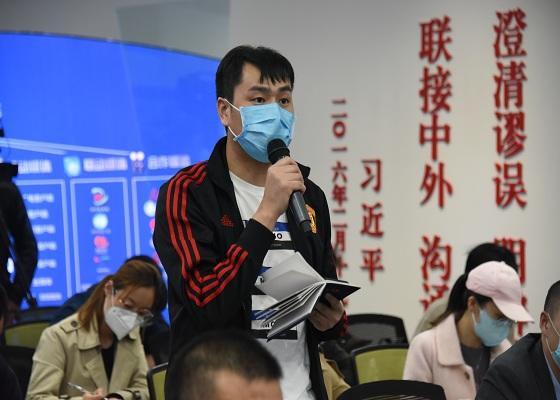
Dahe daily reporter
During the epidemic prevention and control period, online e-commerce played a unique and important role in communicating supply and demand and ensuring consumption. Excuse me, what measures will Alibaba take to stimulate consumption vitality and serve consumers in Henan market?
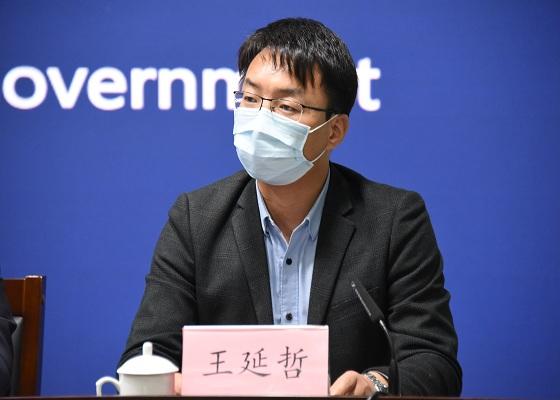
Wang Yanzhe
Since the epidemic prevention and control, Alibaba has responded to the call for the first time. Taobao, Tmall e-commerce platform, rookie logistics and Ali local life platform of Alibaba Group have undertaken the task of ensuring people’s livelihood. With the situation of epidemic prevention and control improving and production and life accelerating to return to normal, Alibaba will help local businesses to enjoy the convenience brought by the Internet through online and offline links, so that consumers can go out of their homes, spend with peace of mind and release their shopping enthusiasm.
The first is to present the wonderful promotional activities of local businesses online. Alibaba’s mission is to "make the world have no difficult business". At the critical moment when the consumer engine is turned on, Ali provides merchants with support such as rate concessions, traffic import, network specials and online presentation. For example, consumers can clearly see which businesses are open and when they are open through the icons of local life businesses in Gaode map. For example, we launched the Hungry Word-of-Mouth Fast Shop Opening Program to provide fast online service for businesses, so that more businesses and consumers can realize interactive links through the Internet. We also very much hope that more peer partners will join us, so that businesses and consumers will feel more convenient.
The second is to adopt colorful promotion methods. Move merchants’ offline consumption promotion activities to Ali online venue, and provide more consumption subsidies to consumers in conjunction with local merchants by means of sky-dropping red envelopes, distribution subsidies, coupons, and time-limited spikes. For example, open a fresh special session of Alibaba’s local life; Open a food card, place an order with one click, eat first and then pay. At the same time, we offer discounts such as overlapping red envelopes and free svip.
The third is to invest in lecturers and training resources to carry out "new retail" training for businesses and improve their operational service capabilities. After the merchants go online and hungry, they will get the takeaway operation guidance service for free. Ali Local Life established Ali Local Life University this month. In the next three years, 1,000 excellent courses will be launched to help 10 million employees of local life businesses in Henan better serve Henan consumers.
Alibaba always keeps the temperature, feels grateful to the society and integrates its own development into the society. Alibaba (Henan) Co., Ltd. has decided to join Henan’s more brilliant journey since the moment it was registered and settled in Henan on September 10 last year. At this moment, Alibaba is ready to work with the people of Henan to welcome the "spring" of serving the public, activating the market and promoting consumption!
Moderator Chang Yiyuan
Media friends, economy and society are a dynamic circulatory system, which cannot be stopped for a long time. The recovery of economic and social development is bound to go through a process and cannot be achieved overnight. On the premise of ensuring the prevention and control of epidemic situation in place, following the rules of market operation and taking scientific and pragmatic measures to accurately and steadily promote consumption and expand domestic demand, we will certainly be able to push economic development back to the normal track, and achieve the objectives and tasks of economic and social development this year while doing a good job in epidemic prevention and control.
That’s all for today’s press conference. Thank you, publishers! Thank you, journalists and friends! Please continue to pay attention to our series of press conferences. Goodbye!























